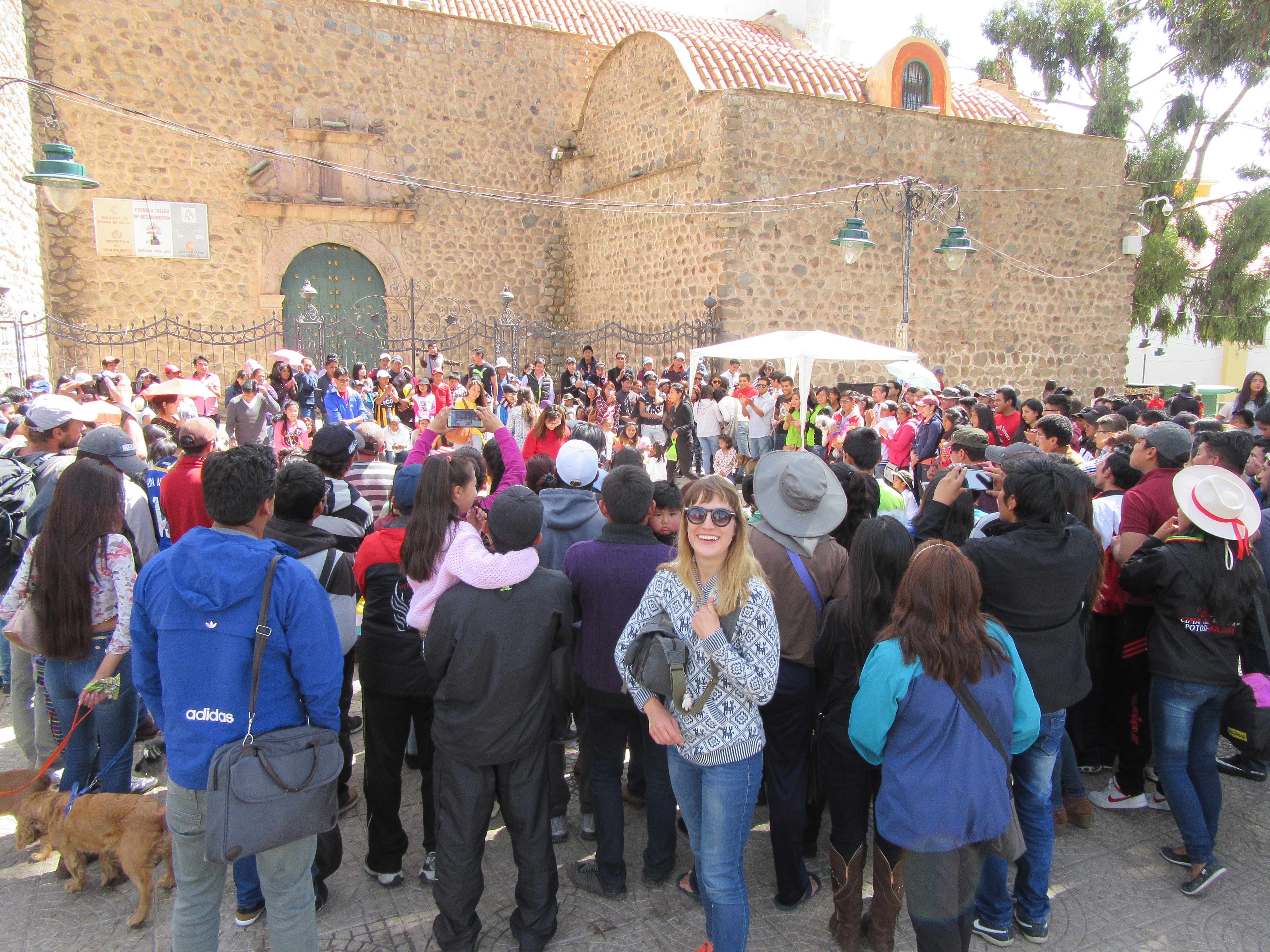
How many times can I write that we visited the “highest city in the world”? Every step in our trip another town defined that accomplishment just differently enough to award it to themselves. Cerro de Pasco—highest city in the word with more then 50,000 residents, El Atlo—highest international airport in the world and now Potosí—at 13,420 feet the highest silver mining town in the world? Potosí is fascinating for more reasons then its elevation. After the Spanish colonization of the New World, the hunt was on to find, exploit and export all possible resources. Although the legendary city of gold was never found, Potosí was founded in 1545 in the shadow of Cerro Rico – ‘the rich mountain’. It was from here that the Spanish mined their silver coins which financed the world for the next 200 years. It’s estimated that 60% of all silver mined in world in the 16th century was taken from Cerro Rico. Much of the labor used was forced either by native Indians or Africans brought by the slave trade. Today Potosí’s economy is driven by tourism, not silver, but the fixation on the mine remains.
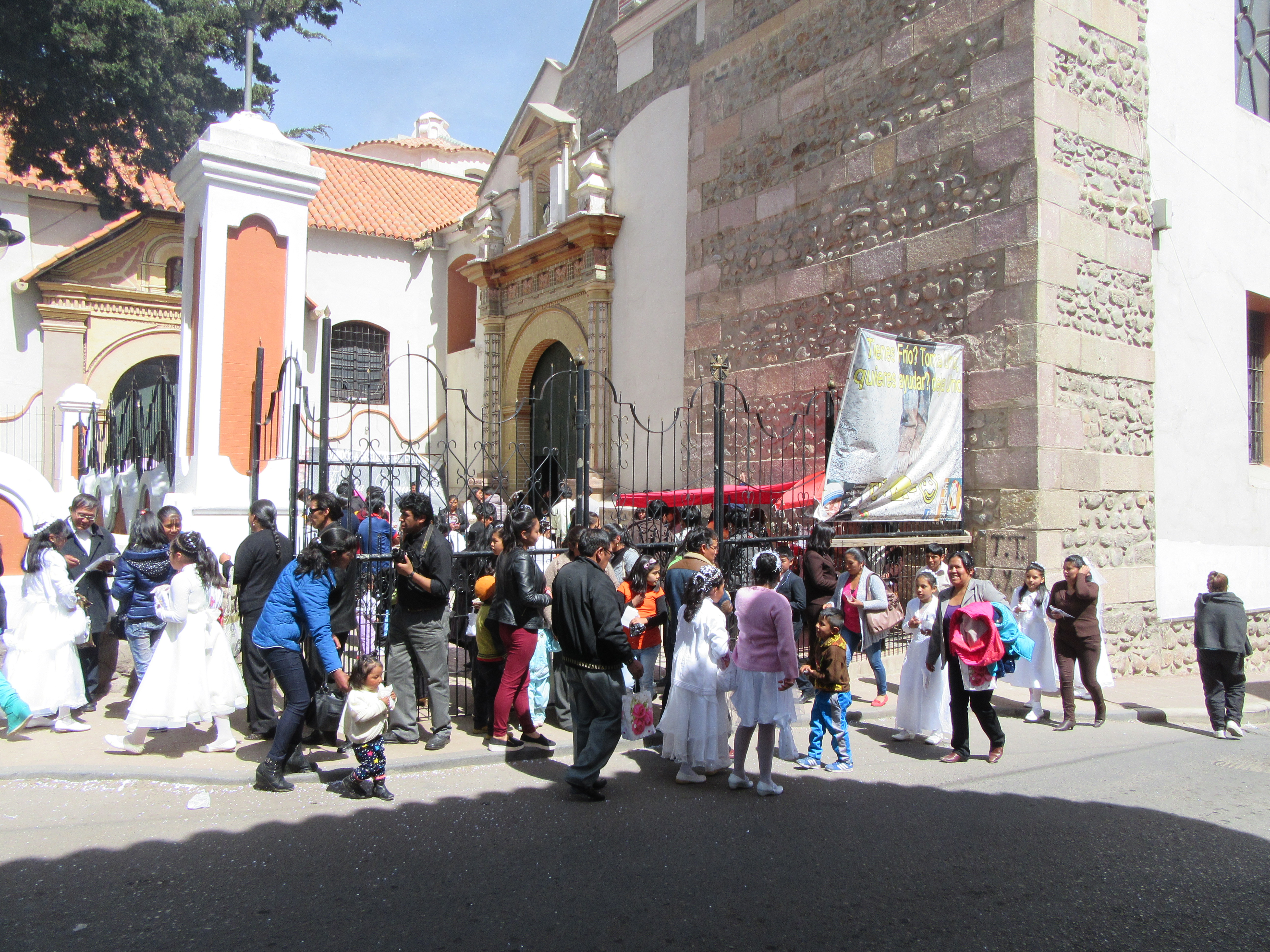
Arriving in a city of 240,000 was a shock after a week of tiny towns and lonely landscapes. I was instantly charmed by Potosí’s Old Town with its 17th century churches on every corner and green town squares with crumbling monuments. Although the churches remain stubbornly closed at all hours of the day, you can enter the Cathedral for 15 Bolivianos and view the town from the bell tower. One of the greatest parts of Bolivia is the feeling of being the only tourist in town, La Paz and the Salt Flats are crawling with backpackers but the rest of the country has the perfect balance of tourist infrastructure and special solo travel moments.
The city has more than enough charm to draw its fair share of visitors but these colonial buildings didn’t appear above 13,000 feet without a dark history. The two can’t-miss sights of Potosí are the museum of the National Mint and a tour of the still very active mines themselves. One of these attractions I recommend full-heartedly as one of the top museums I saw over our entire trip and the other… well I’ll get there.
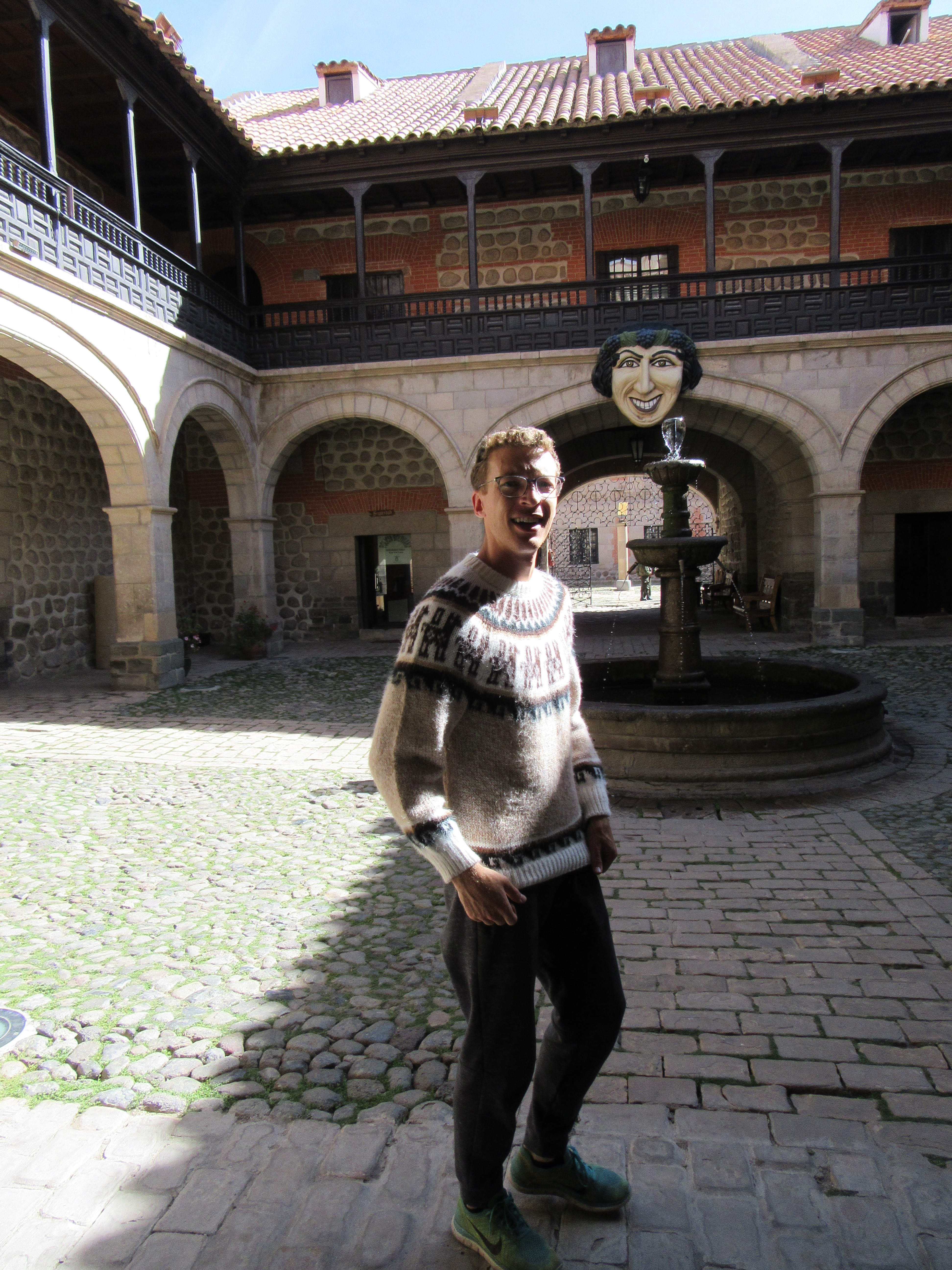
The mint museum or Casa de la Moneda de Bolivia opened in 1575 and was a working mint until 1933. The building is still in fine condition thanks to high altitude eliminating bugs and humidity. The wooden floors are original as are the the monumental wooden gears which powered presses to flatten silver bars, which needed to be heated by hand-powered bellows downstairs. Men would run with the molten hot silver bars in wheelbarrows to be flattened upstairs by presses so large they needed eight donkeys (horses can’t work at this elevation) around the clock to turn the cog. The average life expectancy for a donkey at the mint was only a few months and the people didn’t do much better. In addition to being a time capsule into the production of Spanish pieces of eight, the museum has an impressive art collection from the colonial Cuzco and Lima schools. The works were very different than anything I had seen in Europe thanks to the blend of native and colonial beliefs in religious art. After visiting Casa de la Moneda de Bolivia and walking around the city, I knew it was time for me to make up my mind about whether or not I wanted to do the most popular tour in town, the infamous mine tour.
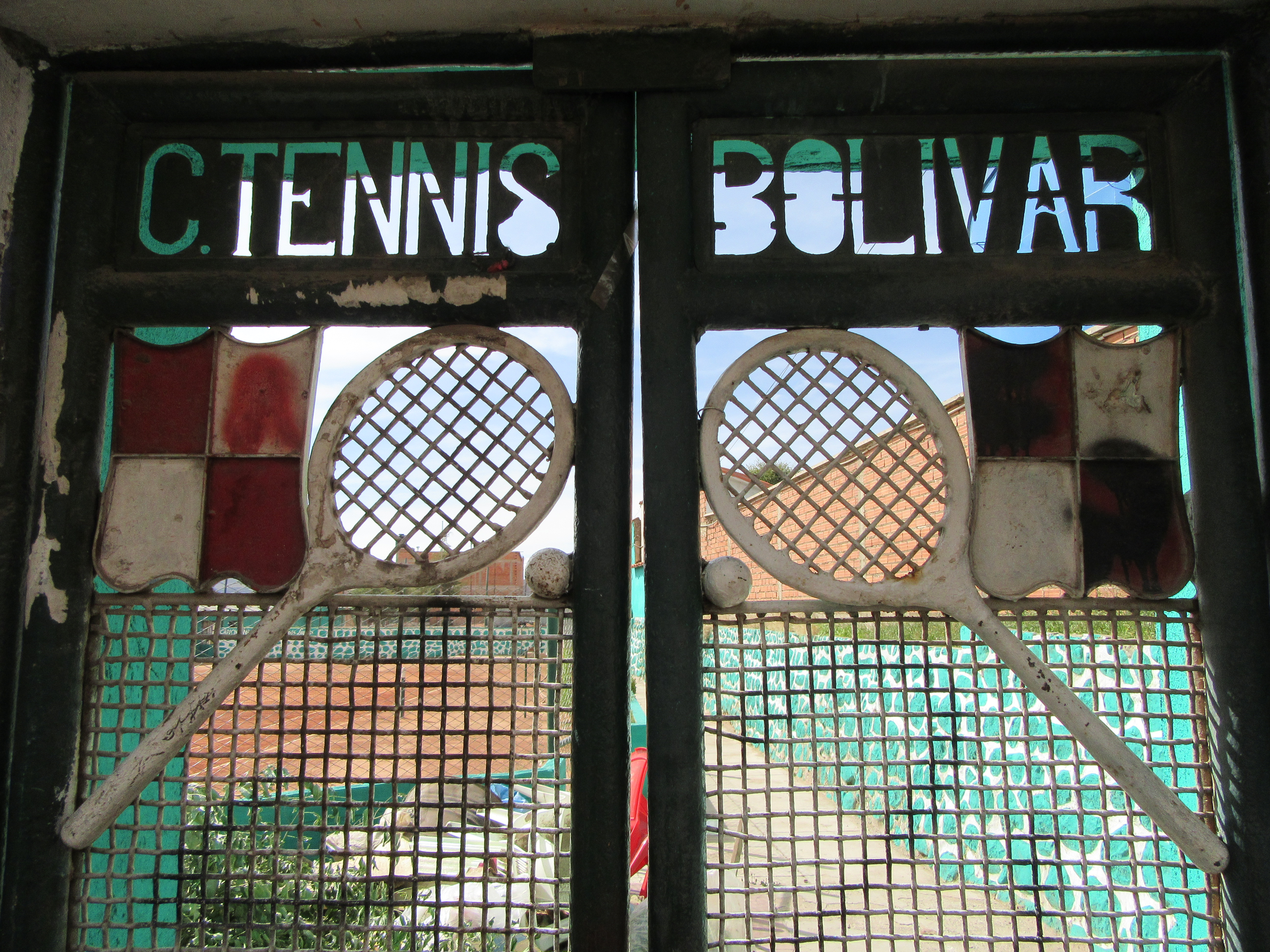
Bolivia is a country known for its infamous “must do’s”. Mountain biking down the Yungas dangerous death road (more on that later), the now defunct prison tours of La Pas and the mine tours of Potosí. There is more than enough young backpackers who consider themselves adrenalin junkies but can’t seem to wake up hangover free. I have aged out of that bracket so I wasn’t sure if the “extreme” mine tour was something I would enjoy. Not only that but everything I read said it was a nerve-wracking, super intense experience. I had a panic attack the night before the tour that I had made a huge mistake and wouldn’t be able to handle the experience. If it wasn’t for all the five star reviews on Trip Advisor I would have demanded my money back and let Eric go on ahead alone.
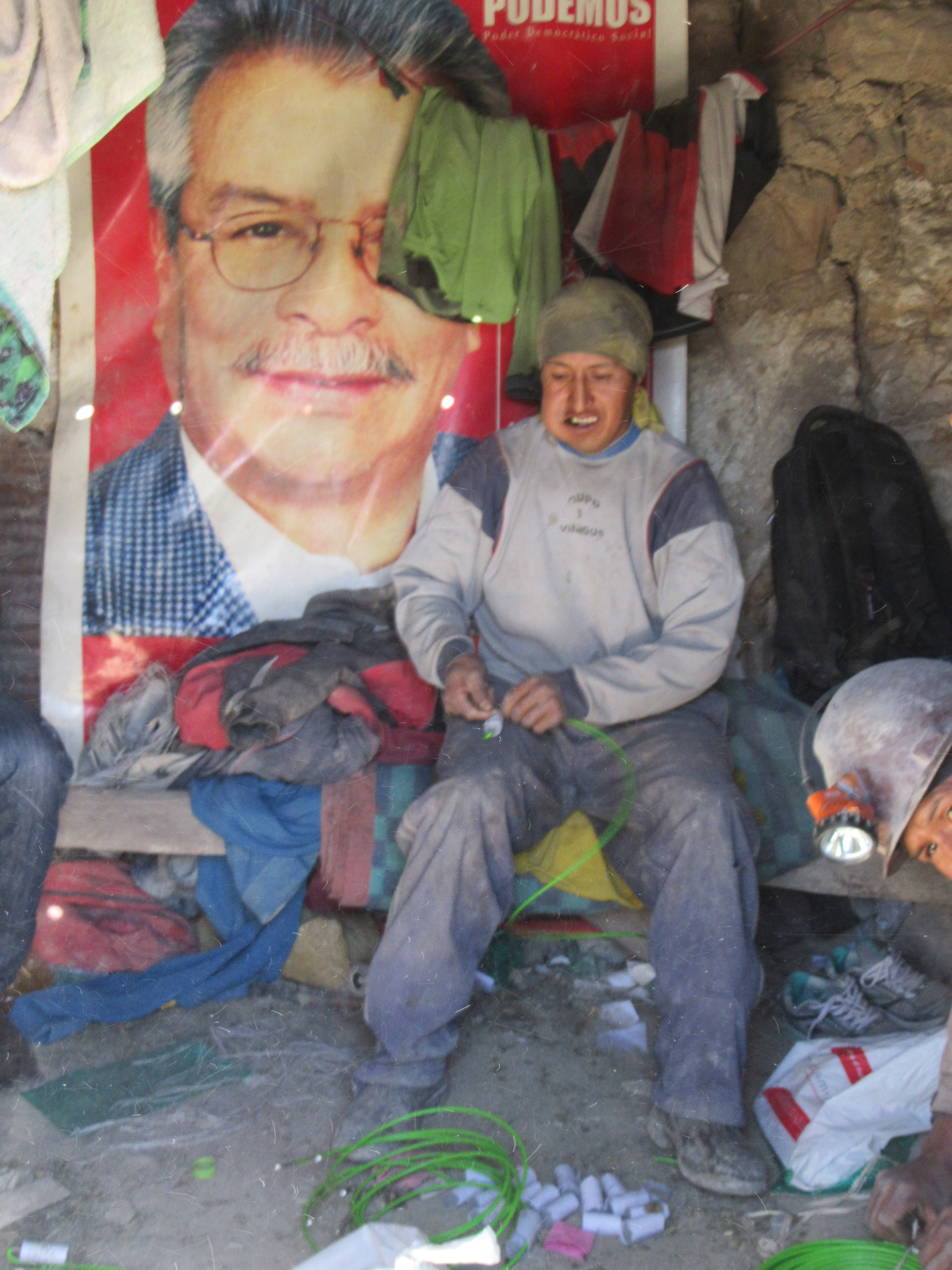
We went with Big Deal Tours which our online research had told us was “the best”. From the moment the tour started we felt rushed. We were yelled at to jump in the van to get to the miners market in time, where we were told to buy sugary juices and coca leaves for the miners. I wish I could have bought water for the miners instead but the market only sold juice, soda and coca leaves for chewing. Perhaps they have an alliance with local dentists? After our trip to the market for a rushed lesson on coca leaves and pushing us to buy dynamite*, we went to a house to change into “safety” gear. Rubber boots, a helmet with a light, a hospital mask and tissue-paper thin coverall are considered safe enough. We were driven up to the top of Cerro Rico where the mine shaft with an agreement with Big Deal Tours was located. Our brusk guide let us know that we would be going into the mine and would spend about an hour inside. I was panicky but tried to relax and remain calm. Didn’t all the reviews say this tour had no small passageways or crawling around?
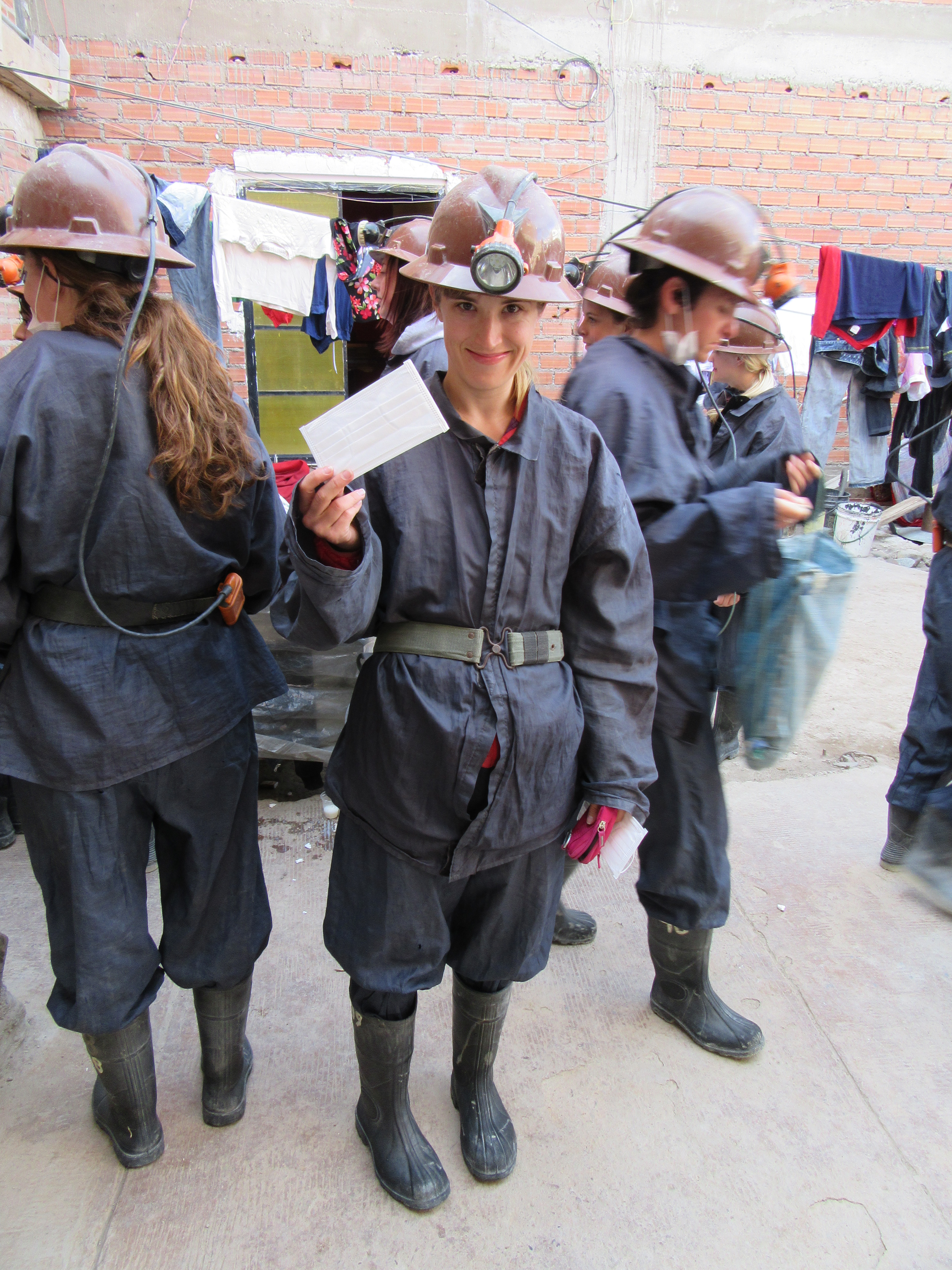
The tour started off with our group dodging a young man pushing a full wheelbarrow back and forth.** Within seconds I could not longer see sunlight and I had to come to terms with what stupid stuff I do in the name of tourism. Our guide took us to a deep pit with a bamboo ladder descending into it and the cacophonous sound of a jackhammer. We passed down bags of coca and two liters of juice while our guide told us that most miners just make what they find for they day, after they pay their cut to the site owner and mining permit owner that is. Men and women need a permit to mine, distribution of which are strictly controlled. The government will chose a few connected families for permits. However mining is hard work; it’s much easier to charge money to rent out the permits to the poorer and less connected, whether or not they every mine enough to cover the cost.
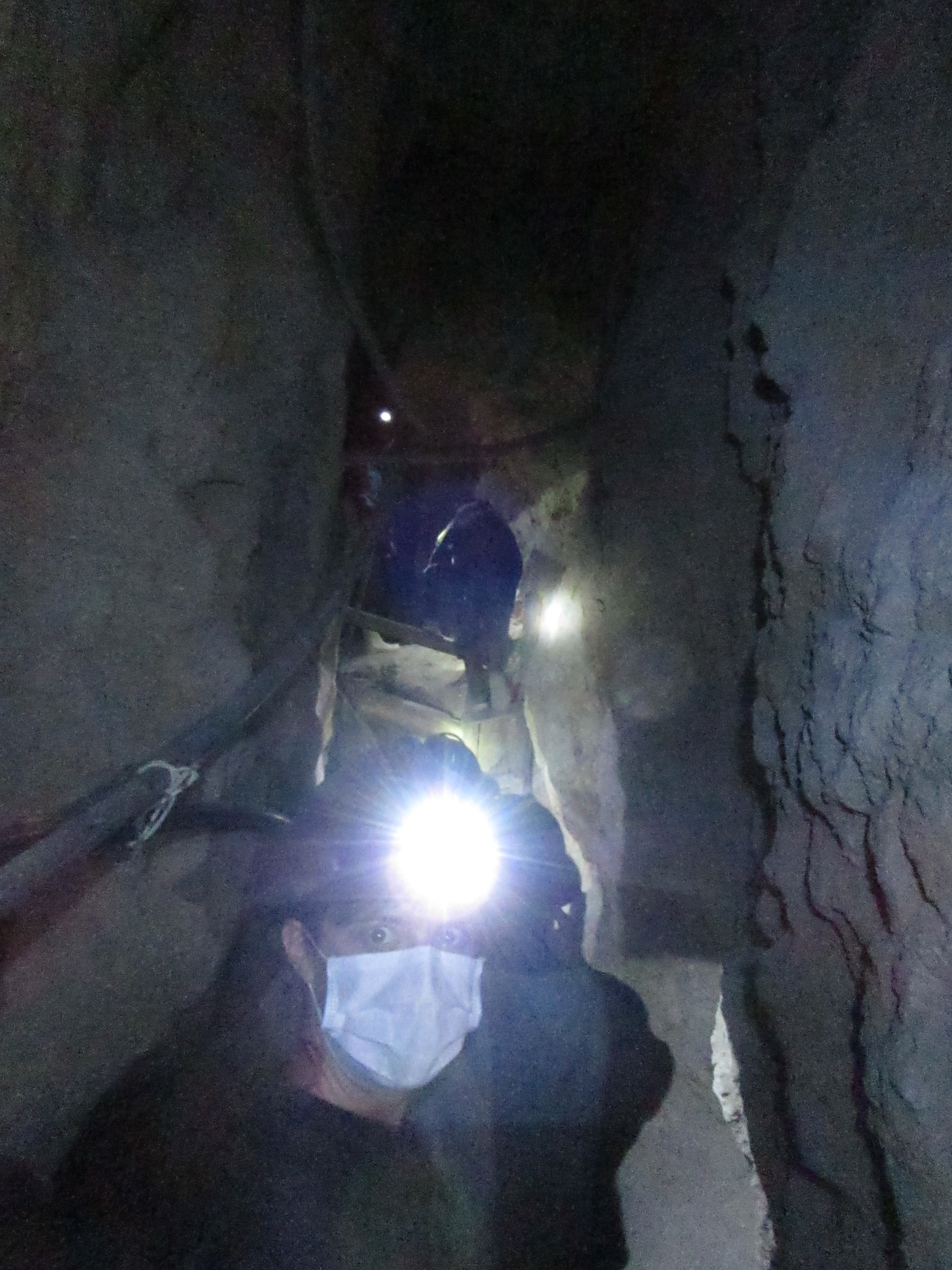
The next step on our tour was to walk around the mine and get a feel for a day in a miner’s life. In realty it turned into 50 minutes of crawling on our hands and knees in silica dust. Climbing rickety wooden ladders in rubber boots two sizes too big and then being asked to leap across a 15 foot deep pit would have ended poorly if another one of my fellow backpackers hadn’t grabbed my arm to keep me from falling. This was before we had to slide on our butts down a two foot tall tunnel of course. At the end of this nonsense game of mousetrap where we saw no more miners, we had to pay our respects to El Tio before leaving. El Tio or the Uncle/Devil is a crudely formed image of a devil-like creature with a large erect phallus. As the miners work underground they say that the earth goddess Pachamama has no power under the earth so they pray to El Tio instead. Praying to El Tio often takes the form of drinking 99% alcohol and lighting a cigarette to place between the idol’s lips. It was a slow day in the mine and our guide rapidly pushed around a small plastic bottle of the 99% alcohol for us all to taste. Smelling it was enough for me and I don’t think Eric’s stomach felt settled all day after his tiny sip. How do these men drink this stuff?
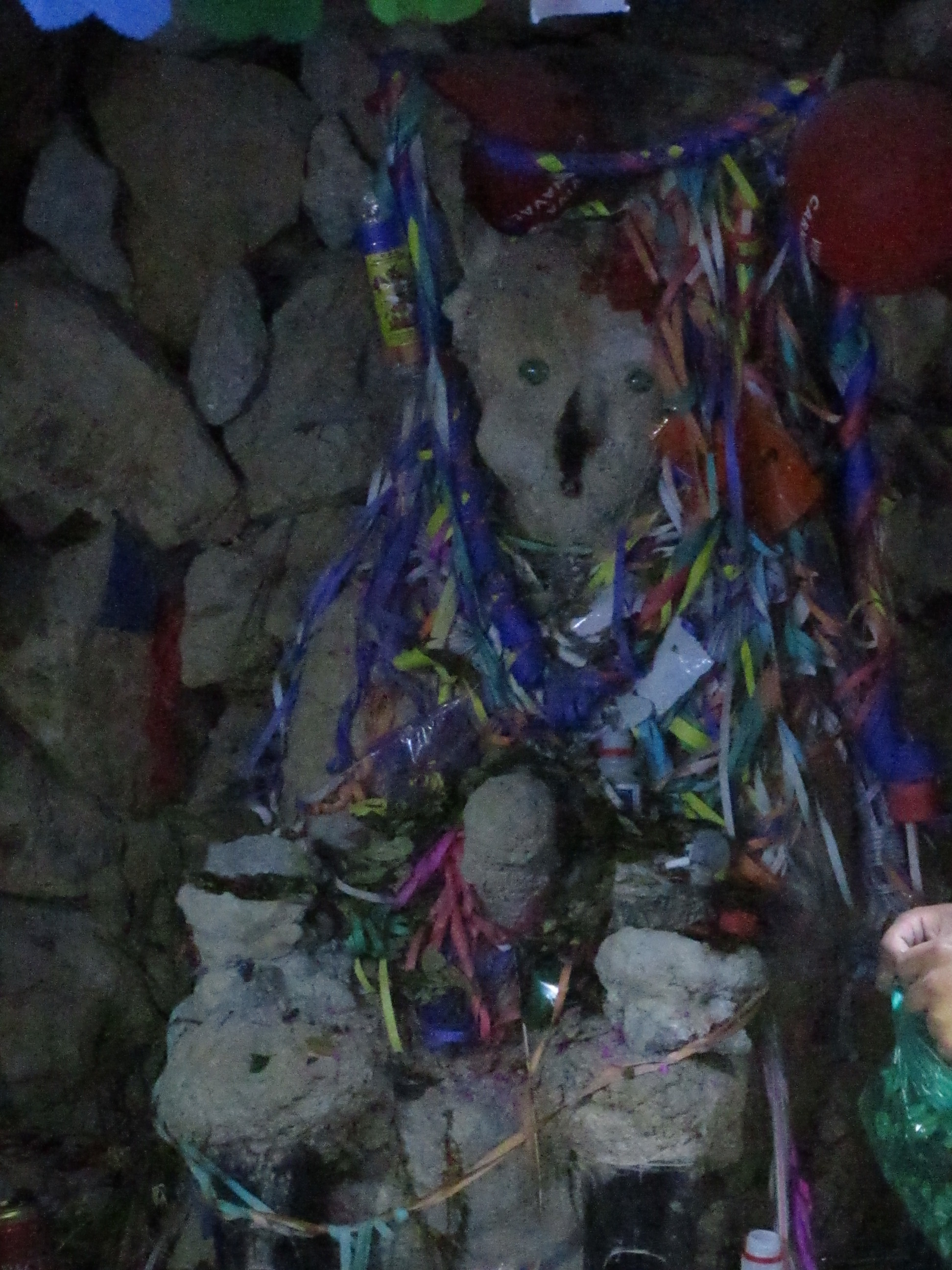
After over an hour underground, I was relieved to see outside light. The tour wasn’t as cramped and as scary as I thought it would be, if anything I was pissed at the tour operator making things extra dangerous to put on a good show. I don’t feel any closer to understanding the life of the poorest of poor in Bolivia; I should have spent the time and money volunteering instead. I don’t recommend doing the mine tours in Potosí, they are both profiting from and distancing us from the miners. Go to the Museum, enjoy the architecture and take a bus to a market out of Old Town to shop and support the local community. After a day like that, buy a locally made beer!
*Supposedly the other tour company lets you blow up your own dynamite. A great idea in a mountain most engineers call “dangerous swiss cheese”.
**It’s important to mention that silver is no longer found in Cerro Rico; the mountain has been mined so extensively for so long that the miners today are left with low value minerals like lead and zinc.
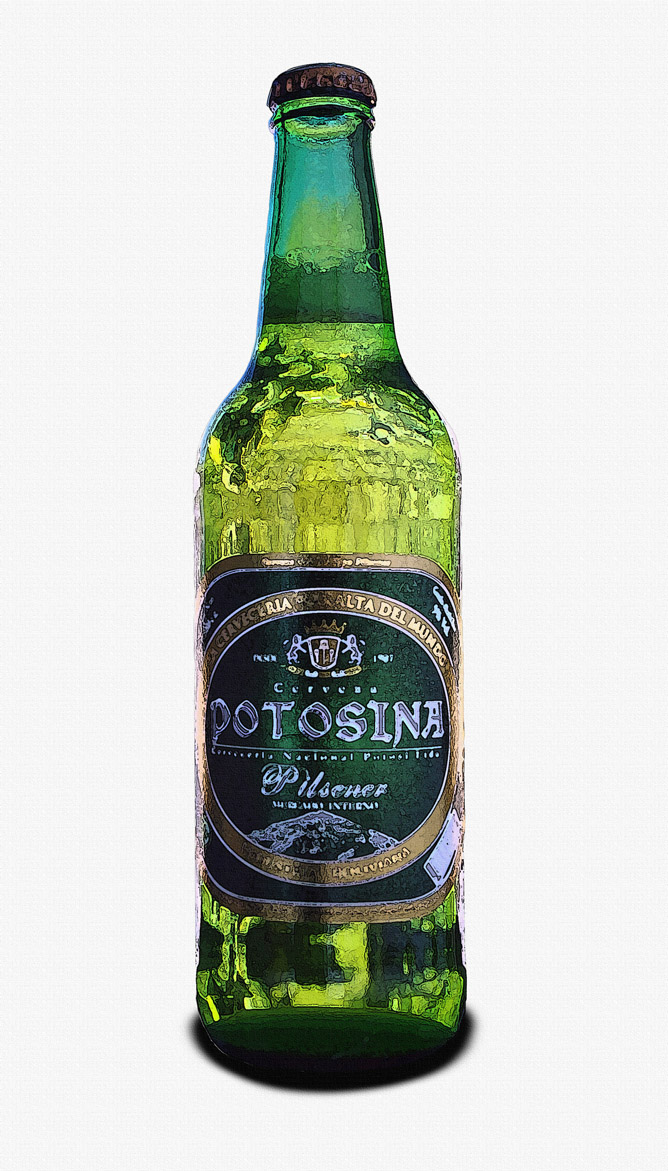 Potosína Pilsener by Cervecería Nacional Potosí
Potosína Pilsener by Cervecería Nacional Potosí
Lager / 5% / ? ABUs
This 110 year old brewery hasn’t done much to help it’s product stand out in a sea of identical lagers in Bolivia. It claims to be the highest brewery in the world but so does a brewery in La Paz, Switzerland and Tibet. Potosína’s disgusting aftertaste reminded me of rubbing alcohol with sugar dissolved in it. I would recommend sticking with the beverages Bolivia does best, freshly made fruit juices.
Final score- Zero out of five deep dark caves.
![]()
![]()
![]()
![]()
![]()

Be First to Comment